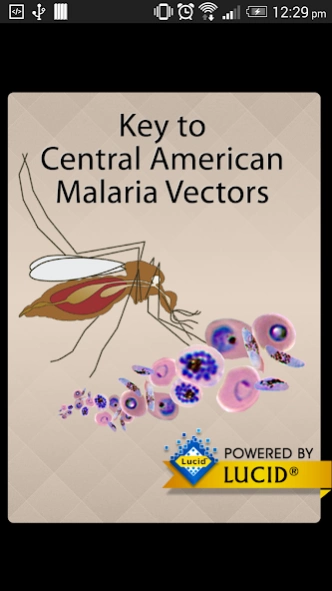Malaria Vectors 1.0.0
Free Version
Publisher Description
Malaria Vectors - Key to Central American Malaria Vectors
We present illustrated identification keys to the adult female mosquitoes belonging to subfamily Anophelinae. Almost all are in genus Anopheles, which worldwide is the only mosquito genus that transmits human malaria. Among the approximately 40 described species in Central America about 25% are known to be efficient vectors of malaria, but others are suspected (see* below). Three biogeographical regions are represented here in “Central America.” The fauna of northern Mexico is very similar to southern North America, and that of eastern Panama is very similar to northern South America. Since there remain many unanswered questions about the identities of many South American species the keys presented here will not necessarily work for eastern Panama.
This key is based on Wilkerson and Strickman, 1990 (Journal of the American Mosquito Control Association, vol. 6: 7-34) who used published literature and original observations. In addition to morphology, country of occurrence has been used as a character in identification. Actual specimens, and often type material, were examined for nearly all the species. Literature used here includes: Faran, 1980, Albimanus Section of subgenus Nyssorhynchus (Contributions of the American Entomological Institute, vol. 15: 1-215.); Linthicum, 1988, Argyritarsis Section of subgenus Nyssorhynchus (Mosquito Systematics, vol. 20: 99-271); Zavortink, 1970, treehole Anopheles (Contributions of the American Entomological Institute, vol. 5: 1-35); Zavortink, 1973, subgenus Kerteszia (Contributions of the American Entomological Institute, vol. 9: 1-54; and, Floore et al., 1976, Crucians Subgroup of subgenus Anopheles (Mosquito Systematics 8: 1-109).
This key is designed to be used with a magnification device, preferably a dissection microscope with good illumination. An introduction to the process of identifying mosquitoes with diagnostic keys and a primer on mosquito taxonomy can be found at http://www.wrbu.org/tut/keys_tut00.html.
Institutional support for this work was provided by the Walter Reed Army Institute of Research, Entomology Branch, the Smithsonian Institution, National Museum of Natural History, Department of Entomology, and the U.S. Environmental Protection Agency (Mosquito Species Diversity and Landscape Change. Amendment to agreement # DW-33-92296801). Photographs and illustrations by Judith Stoffer, and assistance with the mobile key version by Desmond Foley. The opinions and assertions contained herein are those of the authors and are not to be construed as official or reflecting the views of the Department of the Army or the Department of Defense.
*Significant malaria vectors found in Central America
Anopheles (Anopheles) freeborni
An. (Ano.) Quadrimaculatus Complex
An. (Ano.) pseudopunctipennis
An. (Ano.) punctimacula
An. (Kerteszia) pholidotus
An. (Nyssorhynchus) albimanus
An. (Nys.) Albitarsis Complex (marajoara)
An. (Nys.) aquasalis
An. (Nys.) darlingi
Authors:
Richard Wilkerson
Daniel Strickman
Photographs by Judith Stoffer
How to cite the key:
Wilkerson, R.C. and D. Strickman. 2014. Lucid identification key to adult female anophelines of Central America. Walter Reed Biosystematics Unit, Smithsonian Institution. Washington DC.
About Malaria Vectors
Malaria Vectors is a free app for Android published in the Teaching & Training Tools list of apps, part of Education.
The company that develops Malaria Vectors is LucidMobile. The latest version released by its developer is 1.0.0.
To install Malaria Vectors on your Android device, just click the green Continue To App button above to start the installation process. The app is listed on our website since 2014-07-22 and was downloaded 5 times. We have already checked if the download link is safe, however for your own protection we recommend that you scan the downloaded app with your antivirus. Your antivirus may detect the Malaria Vectors as malware as malware if the download link to com.lucidcentral.mobile.malaria_vectors is broken.
How to install Malaria Vectors on your Android device:
- Click on the Continue To App button on our website. This will redirect you to Google Play.
- Once the Malaria Vectors is shown in the Google Play listing of your Android device, you can start its download and installation. Tap on the Install button located below the search bar and to the right of the app icon.
- A pop-up window with the permissions required by Malaria Vectors will be shown. Click on Accept to continue the process.
- Malaria Vectors will be downloaded onto your device, displaying a progress. Once the download completes, the installation will start and you'll get a notification after the installation is finished.



